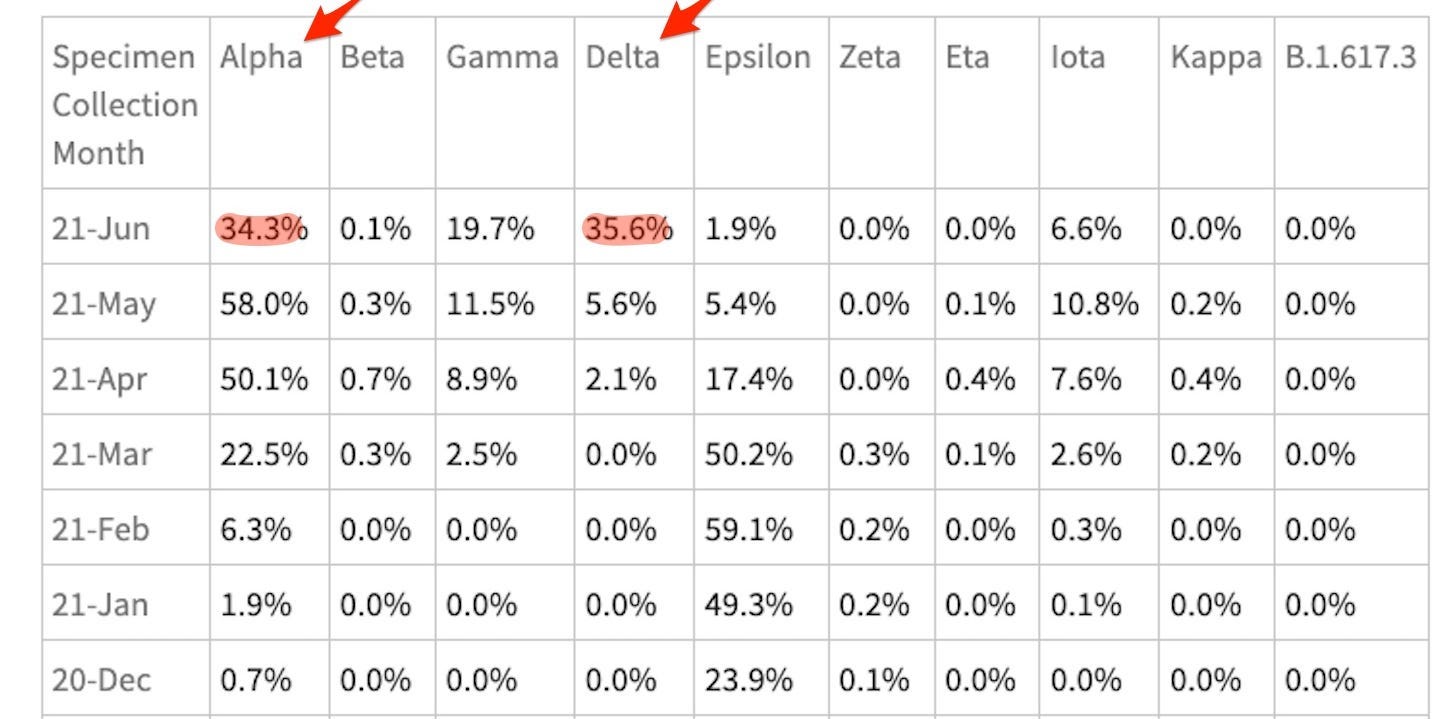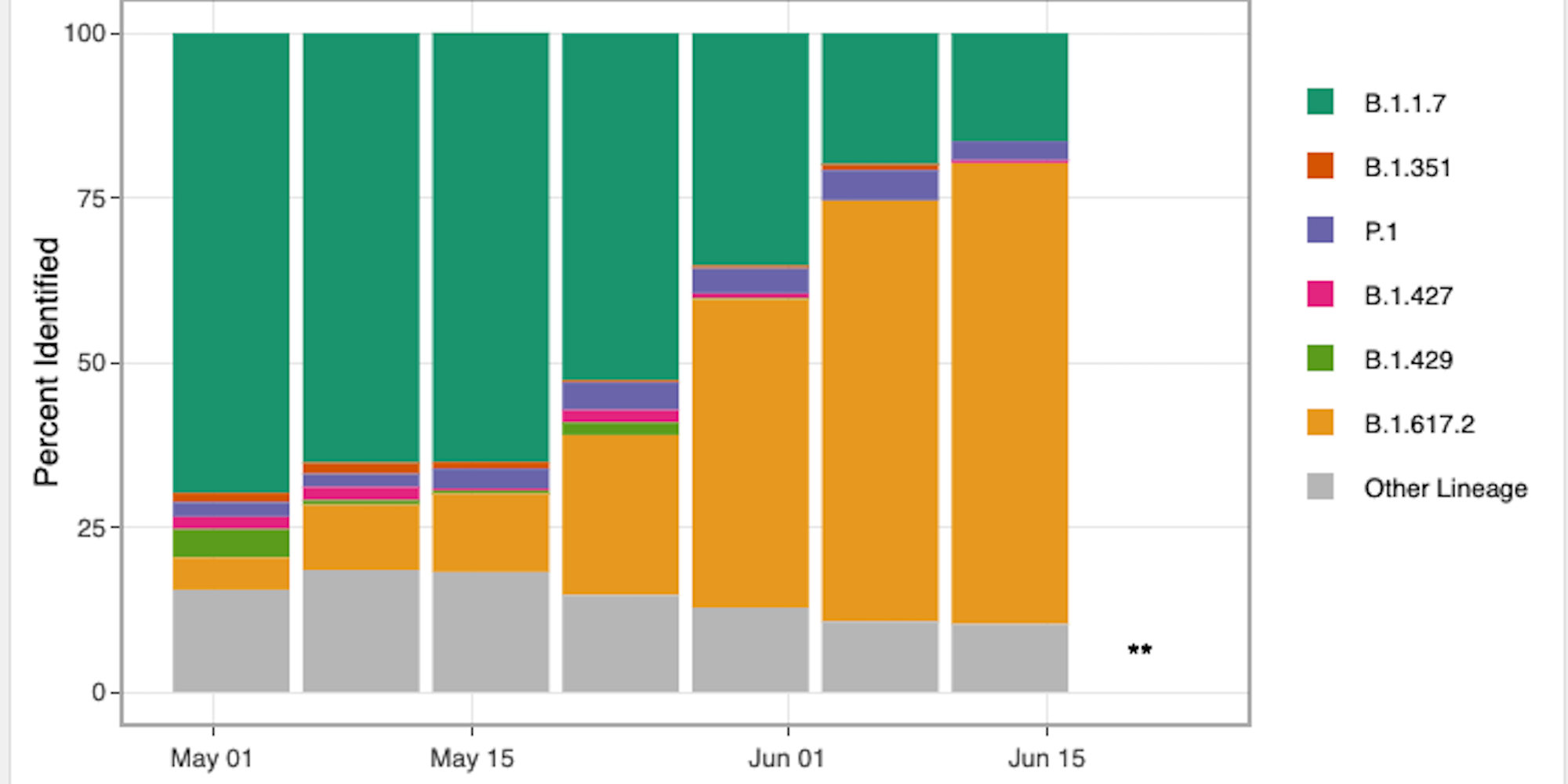
Aydin Palabiyikoglu/Getty Images
- The highly transmissible Delta coronavirus variant is set to become dominant in the US soon.
- Data from California officials suggests Delta is already dominant there.
- Iowa, Arkansas, Missouri and Utah also published data showing that the variant is dominant.
- See more stories on Insider's business page.
Data shows that the Delta variant of the coronavirus is already dominant in five states of the US.
The variant, which is more transmissible than previous ones, has now reached all 50 states in the US. It is set to become dominant in the country over the next couple of weeks, according to expert projections.
Some states are further along the curve than others. Data suggests it has already taken over in at least five. This includes California, the most populous state.
A variant is considered dominant once it causes a greater proportion of infections than any other. It can reach this level before accounting for 50% of cases, though nations where Delta has existed the longest are registering close to 100% dominance.
California
The Delta variant makes up 35,6% of all cases, according to the latest available data from the California Department of Public Health. That is higher than the previously dominant variant Alpha, which made up 34,3% of cases.

California Department of Public Health
Iowa
53% of cases sequenced in the week of June 21 were Delta variants, according to KWWL.
Arkansas
56% of Arkansas cases were due to Delta as of June 24, according to Action 5 news.
Missouri
As of Wednesday, the variant made up about half of the cases in Missouri, according to St. Louis Public Radio.
Utah
70% of cases sequenced on the week of June 13 were Delta variants, according to Utah department of health data.
In the graph below, the variants are called by their scientific names. Delta, or B1.617.2, is orange, while Alpha, or B.1.1.7, is green.

Utah Department of Health
The variant could already be dominant elsewhere
It is likely that the variant is dominant in more states. Data reported here is from infections recorded a few weeks ago, a lag caused by the length of time taken to collect and analyze the data.
An analysis from the Financial Times published on Saturday suggests the variant could already be dominant in 21 states.
These can be seen in the tweet below:
-Eric Topol (@EricTopol) July 3, 2021
As Eric Topol, founder of the Scripps Research Translational Institute, says in this tweet, most states sequence a "very low" proportion of overall cases, making the rate of Delta's spread harder to pin down.
Vaccines work, even with the Delta variant
What is encouraging is that two doses of vaccine are highly protective against developing even mild symptoms after catching the Delta variant. On Sunday, Joe Biden said during July Fourth celebrations that getting vaccinated is "the most patriotic thing you can do."
Data from the UK - where Delta is almost totally dominant - suggests that both doses of the Pfizer vaccine offers 88% and the AstraZeneca vaccine 60% protection from symptomatic disease.
One dose of either is less protective against developing mild symptoms of the disease: 33% in both types.
However, a single dose of either vaccine offers substantial protection against developing a worse version of COVID-19.
The AstraZeneca shot offers 71% efficacy against hospitalization, while the Pfizer shot offers 94% protection, data from the UK shows.
Johnson & Johnson and Moderna have also said that their vaccines work well against the Delta variant.
